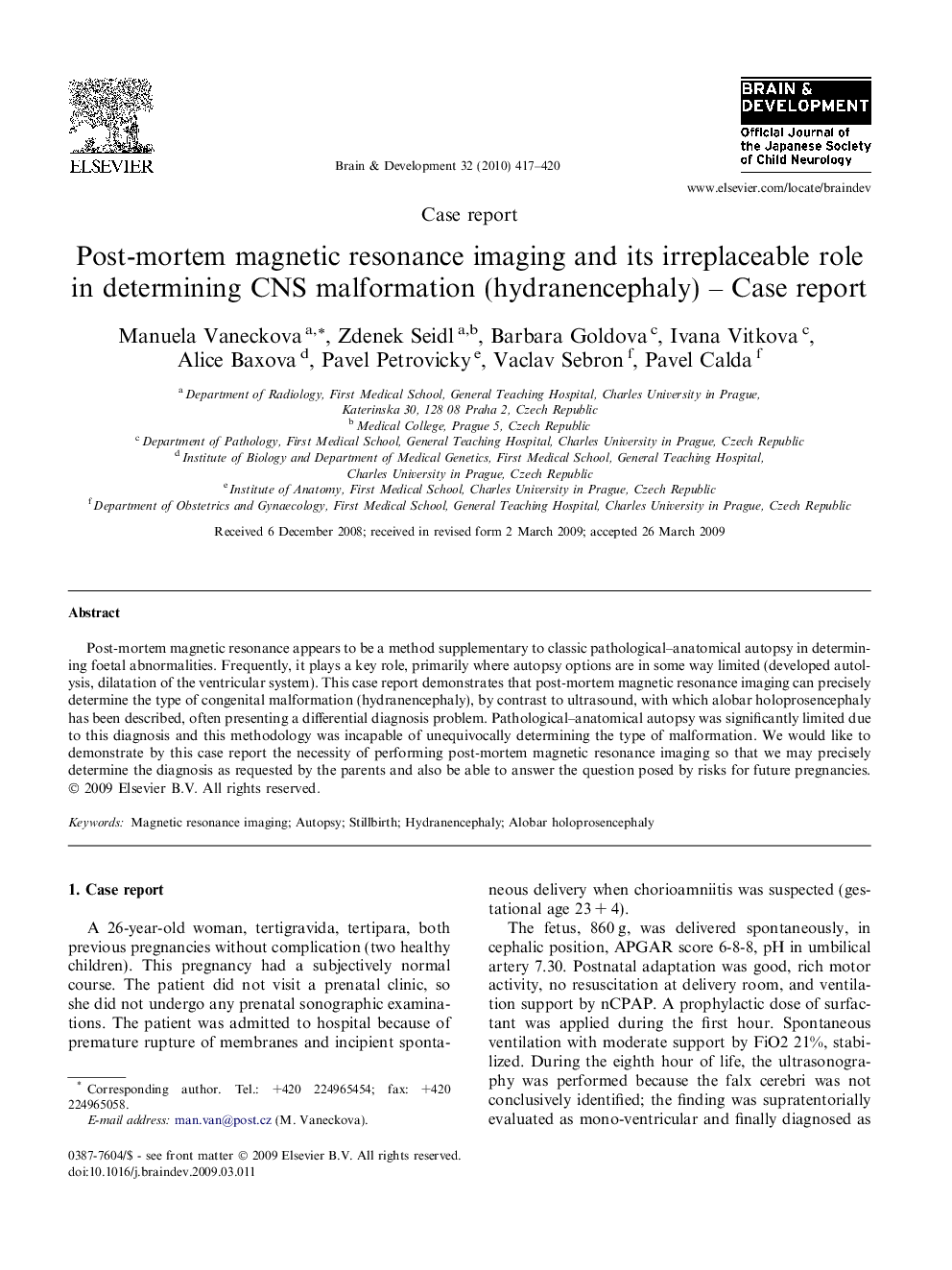| Article ID | Journal | Published Year | Pages | File Type |
|---|---|---|---|---|
| 3037692 | Brain and Development | 2010 | 4 Pages |
Post-mortem magnetic resonance appears to be a method supplementary to classic pathological–anatomical autopsy in determining foetal abnormalities. Frequently, it plays a key role, primarily where autopsy options are in some way limited (developed autolysis, dilatation of the ventricular system). This case report demonstrates that post-mortem magnetic resonance imaging can precisely determine the type of congenital malformation (hydranencephaly), by contrast to ultrasound, with which alobar holoprosencephaly has been described, often presenting a differential diagnosis problem. Pathological–anatomical autopsy was significantly limited due to this diagnosis and this methodology was incapable of unequivocally determining the type of malformation. We would like to demonstrate by this case report the necessity of performing post-mortem magnetic resonance imaging so that we may precisely determine the diagnosis as requested by the parents and also be able to answer the question posed by risks for future pregnancies.
